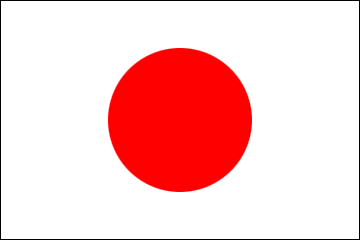Through the Eyes of the former Consul General Yamada (June, 2017 - July, 2020)

Independence Day: Each State Has Its Own Nickname
*Pictures have been approved for use
July 4th is Independence Day for the United States of America. Events celebrating the nation’s independence are held all around the U.S. Army I Corps personnel stationed at Joint Base Lewis-McChord, located south of the city of Tacoma, also celebrated with an event of their own. I received their invitation, and participated in their Fourth of July celebrations.
Building partnerships with the nations of the Asia-Pacific region is one of the missions of I Corps. Their connection to the Japan Self-Defense Forces has deepened through joint exercises. The Japan Ground Self-Defense Force stations a Liaison Officer here; currently that position is occupied by Lieutenant Colonel Fumio Takagi.

The I Corps’ Fourth of July event was held at the base’s athletic field. It began with a parade of state flags, starting from the original 13 states from the time of the Declaration of Independence, and then continued in the order each state was ratified, until all 50 states and U.S. territories were represented. As each state’s name was called, a gun salute was fired. Each state has a nickname; for example, New York is the “Empire State,” Florida is the “Sunshine State,” California is the “Golden State,” and Hawaii is the “Aloha State.”
Washington State, where Seattle is located, is nicknamed the “Evergreen State.” The name comes from the richness of the state’s evergreen trees. The city of Seattle is similarly called the “Emerald City,” after the beautiful green of its many trees.
In 1889, Washington became the 42nd state to be admitted to the union. When the Washington State flag was carried in, the spectators’ cheers were especially resounding.
Seeing the military personnel, who are usually under strict discipline, joining their families and relatives in everyday clothes, relaxing and having fun on this single day, left an impression on me.

The main event was the fireworks show. For about 30 minutes, fireworks were launched from an open space nearby, and the sky was full of so many large bursts of color and light that there was hardly time to breathe.
On this day, I was impressed by the magnificence, brightness, liveliness, and the grand scale of the United States’ Independence Day celebrations.
Japan Fair 2017
Japan Fair, a large Japanese festival, was held from July 8th through the 9th at Meydenbauer Center in Bellevue. The city of Bellevue is located next door to Seattle, but is separated by Lake Washington, a freshwater lake with approximately half the area and twice the depth of Japan’s Lake Biwa. I was surprised to learn that the water is so deep that it was not possible to bore holes in the lake bed, and that the bridge that crosses the lake, which has three highway lanes running in both directions, is a floating bridge, constructed on hollow concrete blocks. Thanks to this bridge, Bellevue has been directly connected to Seattle with no detour around the lake since 1953.
Aside from being an important development base for Microsoft, major companies have been steadily expanding in Bellevue and its surrounding municipalities. It is a city experiencing remarkable economic growth. Bellevue is also home to a Japanese School that serves over 500 students on Saturdays.

At this year’s Japan Fair, JAL, ANA, and companies that supply aircraft parts to Boeing, such as Toray and JAMCO, as well as Mitsubishi Aircraft, which has been developing the first Japanese-made passenger jet with the support of Boeing, came together to put on a special exhibit on the aviation industry. Also popular were robots, like Pepper, the AI robot developed by SoftBank, and Paro, the therapeutic seal robot. Lively special events continued throughout the weekend, including Taiko drumming and musical performances, as well as a cosplay contest on Sunday produced with the cooperation of Sakura-Con. In addition, there were booths representing the Seattle area’s many prefectural clubs, care facilities established for and managed largely by the Japanese-American community, a variety of Japanese souvenirs and traditional goods, tea ceremony and ikebana demonstrations, and tourism information. Fitting for a Japanese festival, takoyaki and yakisoba were also available for purchase.

Japan fair had approximately 20,000 visitors during its two days of operation. The predecessor of this festival was Aki Matsuri, a festival started and led by Tom Brooke, who was taken with his experiences of festivals in Japan. The first Japan Fair took place last year, when the baton was passed to Bellevue Children’s Academy director, Yuka Shimizu, and the Japan Fair planning committee. It is a handcrafted festival made possible by the collective strength of the Japanese and Japanese-American communities in the greater Seattle area, and is an important opportunity for them to come together.
